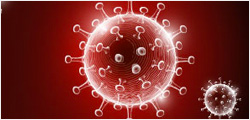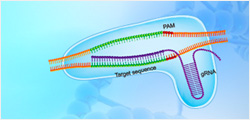F420-dependent enzymes are found in many microorganisms and can catalyze a wide range of redox reactions, including those with some substrates that are otherwise recalcitrant to enzyme-mediated reductions. Unfortunately, the scarceness of the cofactor prevents application of these enzymes in biocatalysis. The best F420-producing organism, Mycobacterium smegmatis, only produces 1.4 μmol per liter of culture. Therefore, we synthesized the unnatural cofactor FO-5′-phosphate, coined FOP. The FO core-structure was chemically synthesized, and an engineered riboflavin kinase from Corynebacterium ammoniagenes(CaRFK) was then used to phosphorylate the 5′-hydroxyl group. The triple F21H/F85H/A66I CaRFK mutant reac... More
F420-dependent enzymes are found in many microorganisms and can catalyze a wide range of redox reactions, including those with some substrates that are otherwise recalcitrant to enzyme-mediated reductions. Unfortunately, the scarceness of the cofactor prevents application of these enzymes in biocatalysis. The best F420-producing organism, Mycobacterium smegmatis, only produces 1.4 μmol per liter of culture. Therefore, we synthesized the unnatural cofactor FO-5′-phosphate, coined FOP. The FO core-structure was chemically synthesized, and an engineered riboflavin kinase from Corynebacterium ammoniagenes(CaRFK) was then used to phosphorylate the 5′-hydroxyl group. The triple F21H/F85H/A66I CaRFK mutant reached 80% of FO conversion in 12 h. The same enzyme could produce 1 mg (2.5 μmol) of FOP in 50 mL of reaction volume, which translates to a production of 50 μmol/L. The activity toward FOP was tested for an enzyme of each of the three main structural classes of F420-dependent oxidoreductases. The sugar-6-phosphate dehydrogenase from Cryptosporangium arvum (FSD-Cryar), the F420:NADPH oxidoreductase from Thermobifida fusca (TfuFNO), and the F420-dependent reductases from Mycobacterium hassiacum (FDR-Mha) all showed activity for FOP. Although the activity for FOP was lower than that for F420, with slightly lower kcat and higher Km values, the catalytic efficiencies were only 2.0, 12.6, and 22.4 times lower for TfuFNO, FSD-Cryar, and FDR-Mha, respectively. Thus, FOP could be a serious alternative for replacing F420 and might boost the application of F420-dependent enzymes in biocatalysis.



































